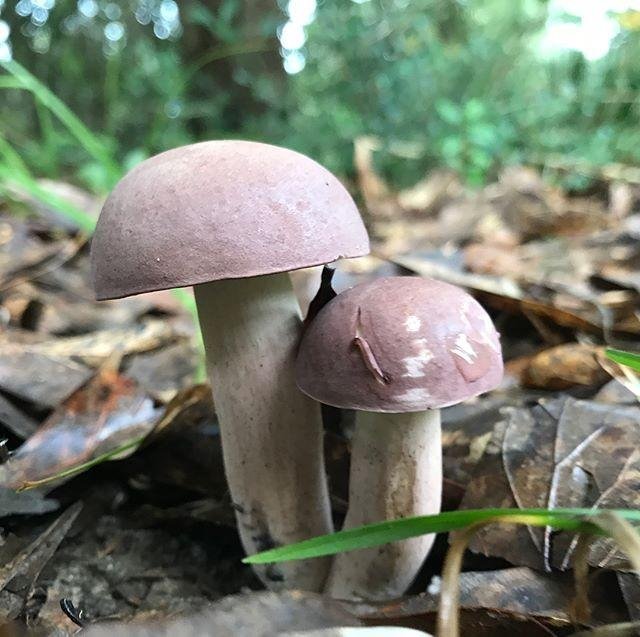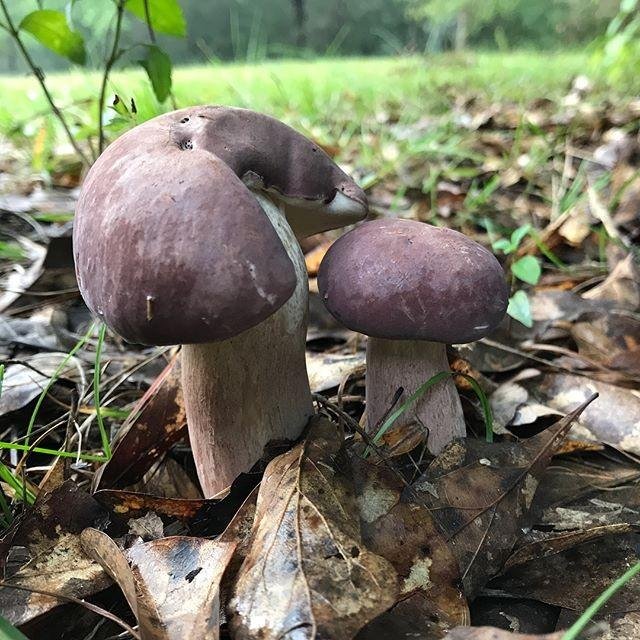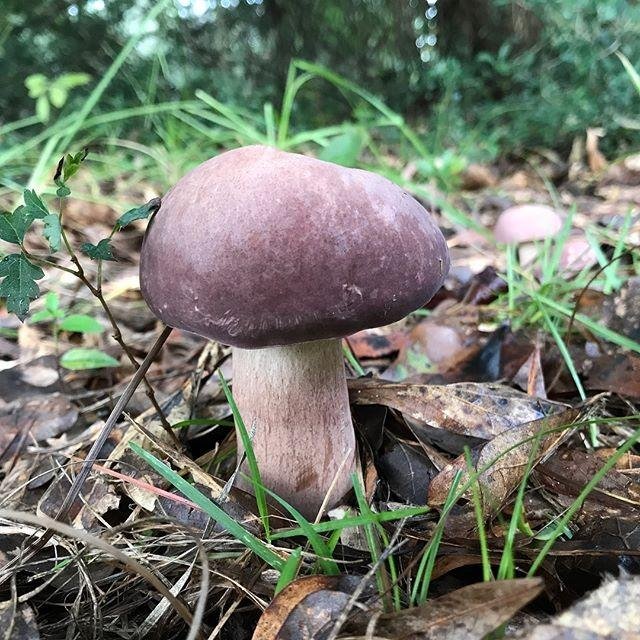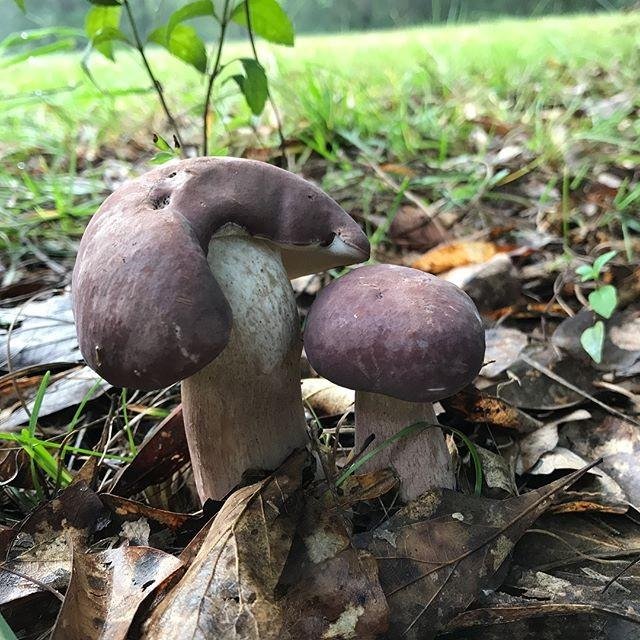The Role of Fungi in Life
The word mushroom or fungi may always mean as a fungus, a short organism, such as a powder or sponge, its body is colored and grows on the ground like a plant. Although fungi are organisms we commonly refer to as mushrooms (actual fungi), and most of the fungi are seen living on the ground, but the word fungi has a broader meaning. Fungi or fungi are defined as a group of eukaryotic, nonmotile, unicellular or multicellular organisms, having cell walls of glucan, mannan, and chitin, not chlorophyll 1, obtaining nutrients by absorbing organic compounds, as well as breeding sexually and asexually .

Based on the presence or absence of septum or septa known as aseptic hyphae, uninukleus septate hyphae, and multinucleus septic hyphae. Some types of mushrooms have hyphae that are not insulated. Inside the hyphae there are many multicellular (multinuclei) spreading in its cytoplasm. Such hyphae forms are called soenocytes. The hyphae of the fungi branches form mycelium. We know there are 2 kinds of mycelium, the vegetative mycelium (serves as a food absorber) and generative mycelium (serves as a reproductive tool).
Heptic aseptic hyphae or hyphae
ie hyphae that have no septum or septum. Another term of this type of hyphae is soenocytic. The hyphae can be found for example in Rhizopus oryzae and Mucor mucedo.
Uninukleus septal hyphae or single-core single-hearted hyphae
the hyphae composed by single-nucleated cells and having a divider that divides the hyphae into spaces, and each space has one cell nucleus. However, the cell nucleus and cytoplasm of one space can move into another space. This is made possible by the presence of pores on the barriers. This type of hyphae can be found for example in Puccinia graminis.
Multinucleated multicellular hyphae or multicelled hyphae
the hyphae composed by many nucleated cells and having a divider that divides the hyphae into spaces, and each space has more than one cell nucleus. Nectria cinnabarina is an example of a fungus that has this type of hyphae.

Mushrooms or fungi have some common properties, namely living in places that are moist, slightly acidic, and not so in need of sunlight. Mushrooms do not photosynthesize, so life is heterotrophic. Fungi live from organic compounds absorbed from other organisms.
The fungus whose nutritional principle is heterotroph causes it to have the ability to live as a trash eater (saprofi t) and as a passenger who steals food from its host (parasite). Saprofit mushrooms are mushrooms whose food is organic compounds that have been described. This fungus has certain enzymes that can break down organic compounds. Usually this fungus live parts of dead organisms, for example in litter or logs that have been weathered.

The obligate parasite mushroom is a fungus that can only live as a parasite. If he is outside his host, he will die. Examples are carinii pneumonia (parasite in the lungs of people with AIDS), epidermophyton fl oocosum (causes of athlete's foot disease), and Ustilago maydis (parasitic fungus in corn plants). While the facultative parasitic fungus is a fungus that in addition to parasitic life, it can also live as a saprofi t. The fungus will be parasitic when getting the host. Mushrooms have a very impressive life skills. Mushrooms can also live at temperatures around 22oC - 30oC. There are even several types of mushrooms that can thrive at a temperature of about -5oC. Mushrooms can also live in places that contain sugar or salt dung. And another common trait is the fungus capable of utilizing various foodstuffs to meet the necessities of life, but can not use inorganic carbon compounds, like bacteria.
Seen from the structure of the body, the fungus has characteristics that are useful to recognize whether an organism is a fungus or not. Organisms that belong to the fungus may consist of one cell or multiple cells. Single-celled fungus (unicellular), for example, is yeast (Saccharomyces cerevisiae). While mushrooms are multicellular body (multicellular) can be microscopic fungus or macroscopic fungus. Microscopic fungus is a fungus that can only be seen with a microscope, because it has a very small body size. An example of a multicellular microscopic fungus is Aspergillus sp. and Penicillium sp. Multicellular mushrooms also exist that are macroscopic, easily observable with the naked eye, which is large. Examples of macroscopic fungi are mushroom (Volvariella valvacea) and ear mushrooms (Auricularia polytricha).

Saccharomyces cerevisiae
Saccharomyces cerevisiae is a microscopic, single-celled fungus and has no fruit body, often referred to as yeast, yeast, or yeast. Vegetative reproduction is by forming buds or budding. Under optimal conditions, yeasts can form more than 20 buds. The shoots grew larger and eventually separated from the stem cells. This released shoot then grows into a new individual.
Generative reproduction occurs by means of askus and askospores. Askospores of 2 different types of patterns meet and converge to produce diploid cells. Next there is division in meiosis, so some askospora (haploid) is produced again. The haploid askospora functions directly as a new yeast cell. This way of sexual reproduction occurs when asexual reproduction can not be done, for example when the food supply is disrupted or the environment is unsupported.
In human life, S. cerevisiae is used in making bread, tape, peuyeum, wine, beer, and sake. The process that occurs in the manufacture of these foods is fermentation. Pay attention
Penicillium lives as a saprophy on a substrate containing lots of sugar, such as rice, bread, and ripe fruits. On the sugar substrate, this fungus looks like a blue or greenish stain. Note Figure 5.18. Penicillium fungus reproduction takes place vegetatively (konidia) and generatively (askus). Some examples of mushroom members of the genus Penicillium include:
Penicillium notatum and Penicillium chrysogenum
Both types of Penicillium produce antibiotic substances (penicillin)
Penicillium roquefortii and Penicillium camemberti
Both types of mushrooms are commonly used in giving flavor or scent cheese.
This fungus usually grows colonize on food, clothing, and household appliances. The Apergillus colony is gray, black, brown, and greenish. Distribution is vast, can grow in cold climates and tropical regions. Vegetative reproduction with wind-propelled conidia. Some types of mushrooms Aspergillus clan members are:
This fungus is commonly used to stir the dough, and the fungus can produce protease enzymes.
This type of aspergilus plays a role in the manufacture of sake, soy sauce, tauco, citric acid, oxalic acid, and formic acid, and the production of protease enzymes.
This type is used to remove O2 gas from the juice, and can clear it. The fungus can also produce glucose oxidase and pectinase enzymes.
This type of Aspergilus produces an afl atoxin, a cause of cancer in humans.
This fungus lives as a parasite in the ear, causing automikosis.
fumigatus is a fungus that can cause cancer in birds lung.d. Neurospores crassa
N. crassa is known as oncom fungus because it is often used to make oncom. The pink or orange color that appears on the oncom is the color of the conidia of the fungus. Initially this type is grouped into the Deuteromycota Division, by the name of Monilia sitophila. But after found the generative reproductive apparatus, the form of askus, now this fungus is incorporated into the Ascomycotina group.
Morchella deliciosa and Morchella esculenta
Both types of mushrooms are macroscopic mushrooms, living on the ground. Because it tastes delicious, this mushroom becomes human consumption. In the world of mushroom trade is known as namamorel, medium size, reddish brown, body like a sponge and often sold in the form of preserved.
**Join Me @dorsuwa-photography**
Suggestions for the whole community Steemit to continue to increase knowledge knowledge about fungi / mushrooms As a human, we need to cultivate mushrooms that are beneficial to meet food needs. Hopefully in this article good for readers can understand the importance of mushrooms in daily life what if the reader finds words that are less pleased, the authors say apologies as much as possible.
Follow me @dorsuwa
a very good discovery, I am interested in workers looking for mushrooms..! 🍄 🍄
These are exciting finds! I love purple mushrooms!
thank you for stopping in my post, there likes me proud greeting our friendship.
Mushlove!